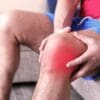Managing Knee Pain After Patellar Dislocation: A Comprehensive Guide for Indians
Introduction:
Knee pain is a common problem that affects people of all ages, especially those who are physically active. Patellar dislocation is a condition where the kneecap (patella) slips out of its normal position, causing severe pain and discomfort. If you have experienced a patellar dislocation, you know how debilitating it can be. In this article, we will discuss the best ways to manage knee pain after a patellar dislocation, specifically for the Indian population.
Step 1: Rest and Ice
The first step in managing knee pain after a patellar dislocation is to rest and apply ice to the affected area. Resting the knee will help reduce inflammation and allow the knee to heal. Applying ice to the knee for 15-20 minutes at a time, several times a day, will also help reduce swelling and pain.
Step 2: Compression and Elevation
Compression and elevation are also important in managing knee pain after a patellar dislocation. Compression can be achieved by wrapping the knee with an elastic bandage or wearing a knee brace. Elevation involves keeping the knee elevated above the level of the heart to reduce swelling.
Step 3: Physical Therapy
Physical therapy is an essential part of managing knee pain after a patellar dislocation. A physical therapist can help you regain strength and flexibility in your knee through exercises and stretches. They can also teach you how to walk and move properly to avoid further injury.
Step 4: Pain Management
Pain management is an important aspect of managing knee pain after a patellar dislocation. Over-the-counter pain medications such as acetaminophen or ibuprofen can help reduce pain and inflammation. Your doctor may also prescribe stronger pain medications if necessary.
Step 5: Surgery
In some cases, surgery may be necessary to manage knee pain after a patellar dislocation. Surgery may be recommended if the kneecap is severely damaged or if other treatments have not been effective.
Conclusion:
Managing knee pain after a patellar dislocation can be challenging, but with the right treatment plan, it is possible to regain full function of your knee. Rest, ice, compression, and elevation are the first steps in managing knee pain. Physical therapy can help you regain strength and flexibility, while pain management can help reduce discomfort. In some cases, surgery may be necessary. If you are experiencing knee pain after a patellar dislocation, it is important to seek medical attention. Download the Fitpaa app today to get personalized guidance and support on your journey to recovery.











